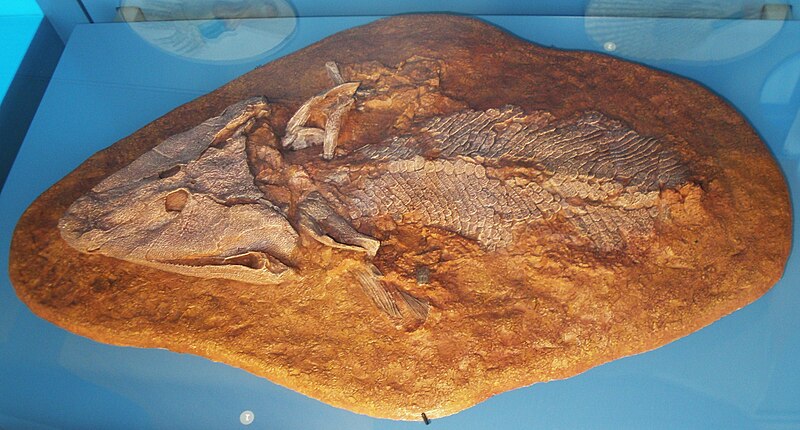 |
| Coates's lungfish in its special tank |
When the species was first recorded, rumours began to circulate about its alleged walking behaviour. Yet nobody conducted further analysis into the biomechanics of its locomotion. Now scientists working at the University of Chicago believe that they have shed some light upon the route from water-bound fish to land-dwelling amphibians.
A team of biologists led by Heather King, a graduate student at the University of Chicago, set up a special tank with an array of cameras, allowing organisms within to be viewed from the bottom and sides. Inside they placed an African lungfish, Protopterus annectens that belonged to co-author Michael Coates. From this they were able to reconstruct the way it moved by combining data from the cameras and detailed examinations of its tracks as it moved sluggishly through the tank.
'In a number of these trackways, the animals alternate their limbs, which suggested that they must have been made by tetrapods walking on a solid substrate,' said Melina Hale, PhD, associate professor of Organismal Biology and Anatomy. 'We've found that aquatic animals with fundamentally different morphologies and that aren't tetrapods could potentially make very similar track patterns.' The study revealed that the lungfish mainly used its back limbs for locomotion, a characteristic seen in most terrestrial vertebrates.
The team also saw to distinct types of locomotion. Some sets of tracks showed that the lungfish, in order to move fast, used bounding motions involving the movement of both limbs at the same time, while others showed that it alternated its limbs, using a gait equivalent to walking. These two patterns of motion, combined with an ability to fully rotate the joint and place its 'feet' with care may explain the origins of certain sets of tracks commonly associated with tetrapods.
King and her colleagues believe that the four-limbed locomotions seen in tetrapods may have actually evolved in their water-bound ancestors, as opposed to an earlier theory which concluded that they first evolved in amphibians. By filling their lungs with oxygen, either from the water or the air, the primitive ancestors of the lungfish and the amphibians could have made their heavy torsos lighter, enabling them to use their weak front legs for support, while the powerful back legs enabled them to walk up the ancient Devonian beaches.
Neil Shubin is renowned for his work on the evolution of amphibians. He discovered a new species, Tiktaalik roseae, and coined the popular term 'fishapod.' As he holds the position of Robert.B.Bensley Professor of Organismal Biology and Anatomy at the University of Chicago, his input on King's study was invaluable. He found the results rather surprising, and gave his own opinion on the newly proposed theory.
Neil Shubin is renowned for his work on the evolution of amphibians. He discovered a new species, Tiktaalik roseae, and coined the popular term 'fishapod.' As he holds the position of Robert.B.Bensley Professor of Organismal Biology and Anatomy at the University of Chicago, his input on King's study was invaluable. He found the results rather surprising, and gave his own opinion on the newly proposed theory.
